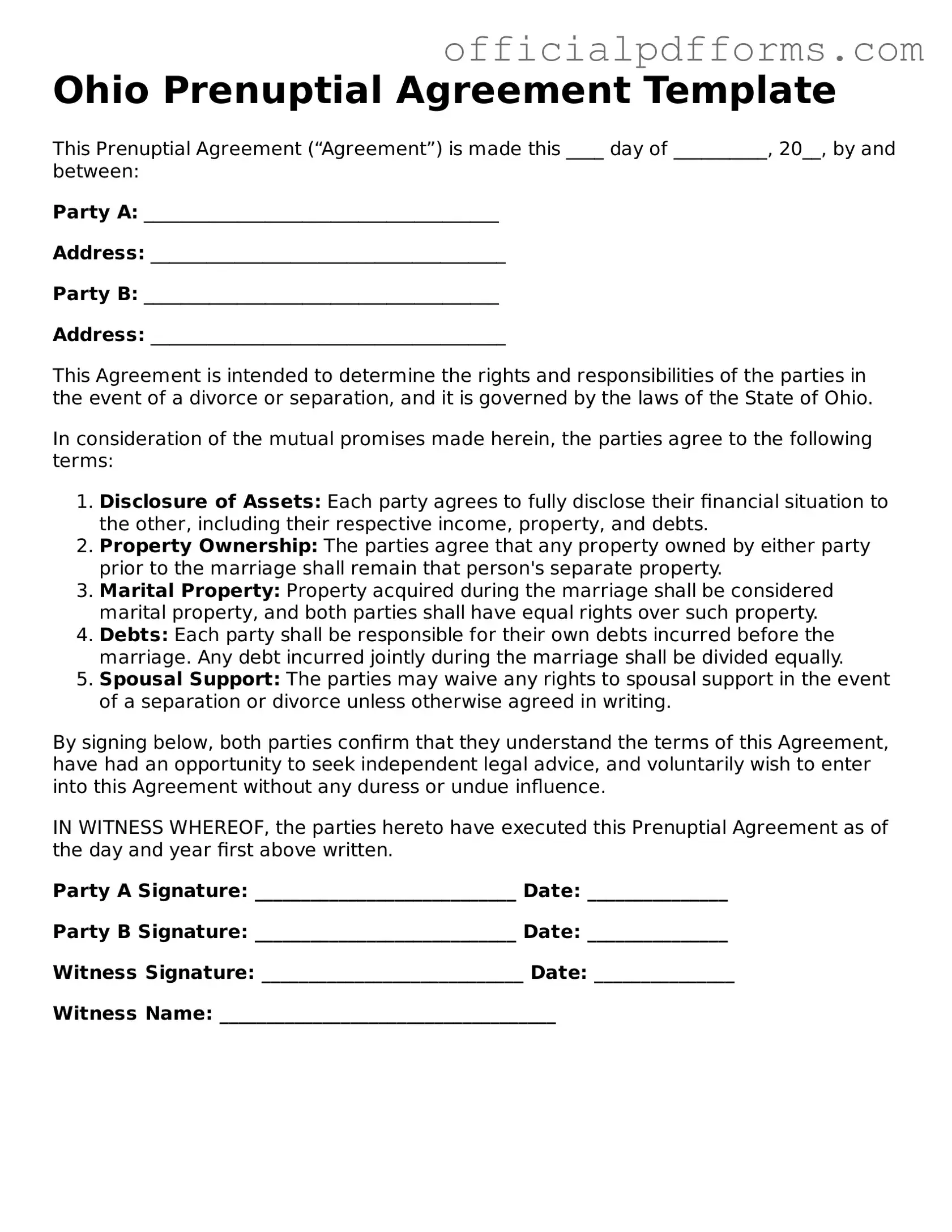Printable Ohio Prenuptial Agreement Template
A prenuptial agreement form in Ohio is a legal document that outlines the terms of asset division and financial responsibilities between partners before marriage. This agreement can provide clarity and protection for both individuals, ensuring that both parties understand their rights and obligations. If you’re considering a prenuptial agreement, take the first step by filling out the form below.
Click the button below to get started!
Access Form Online
